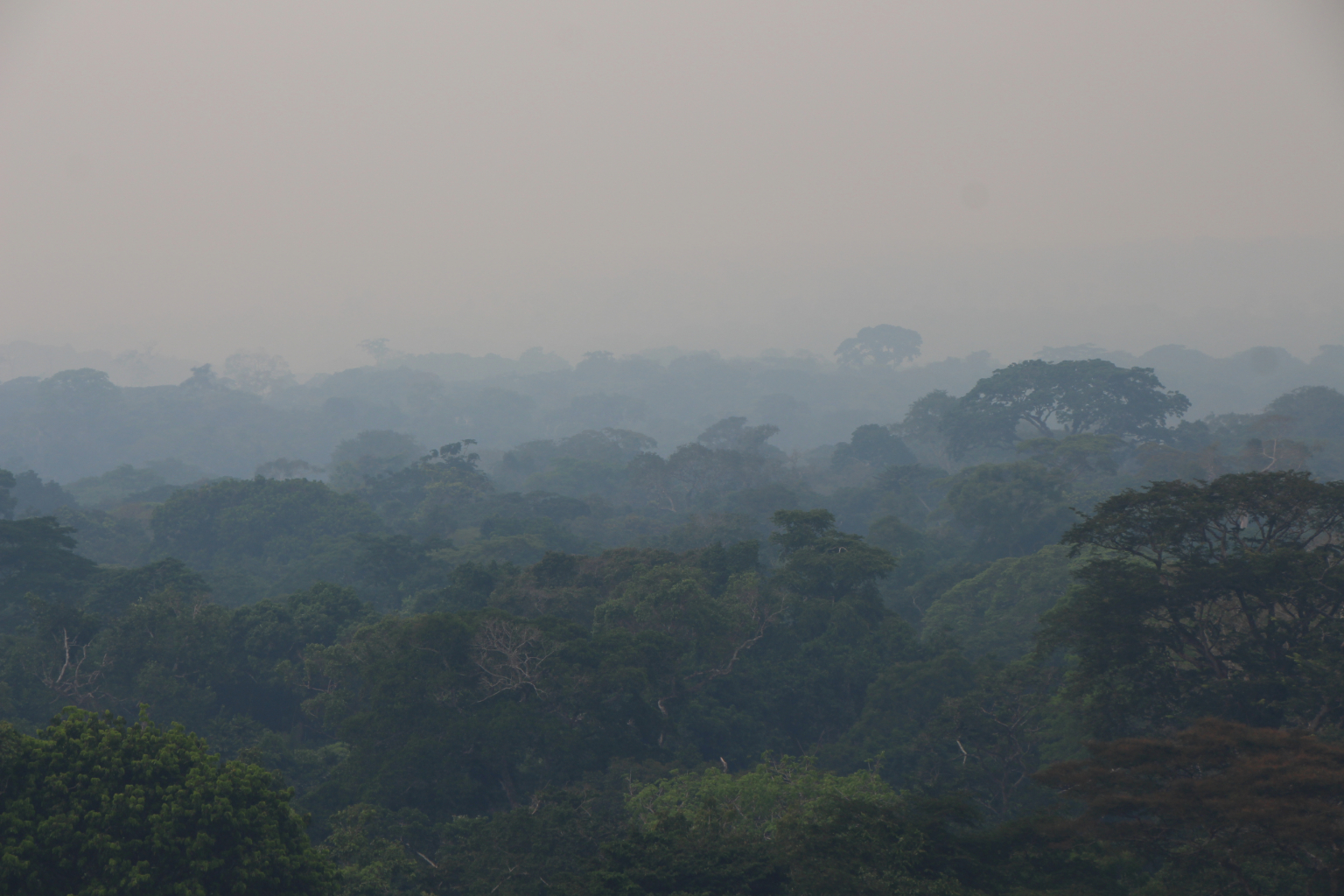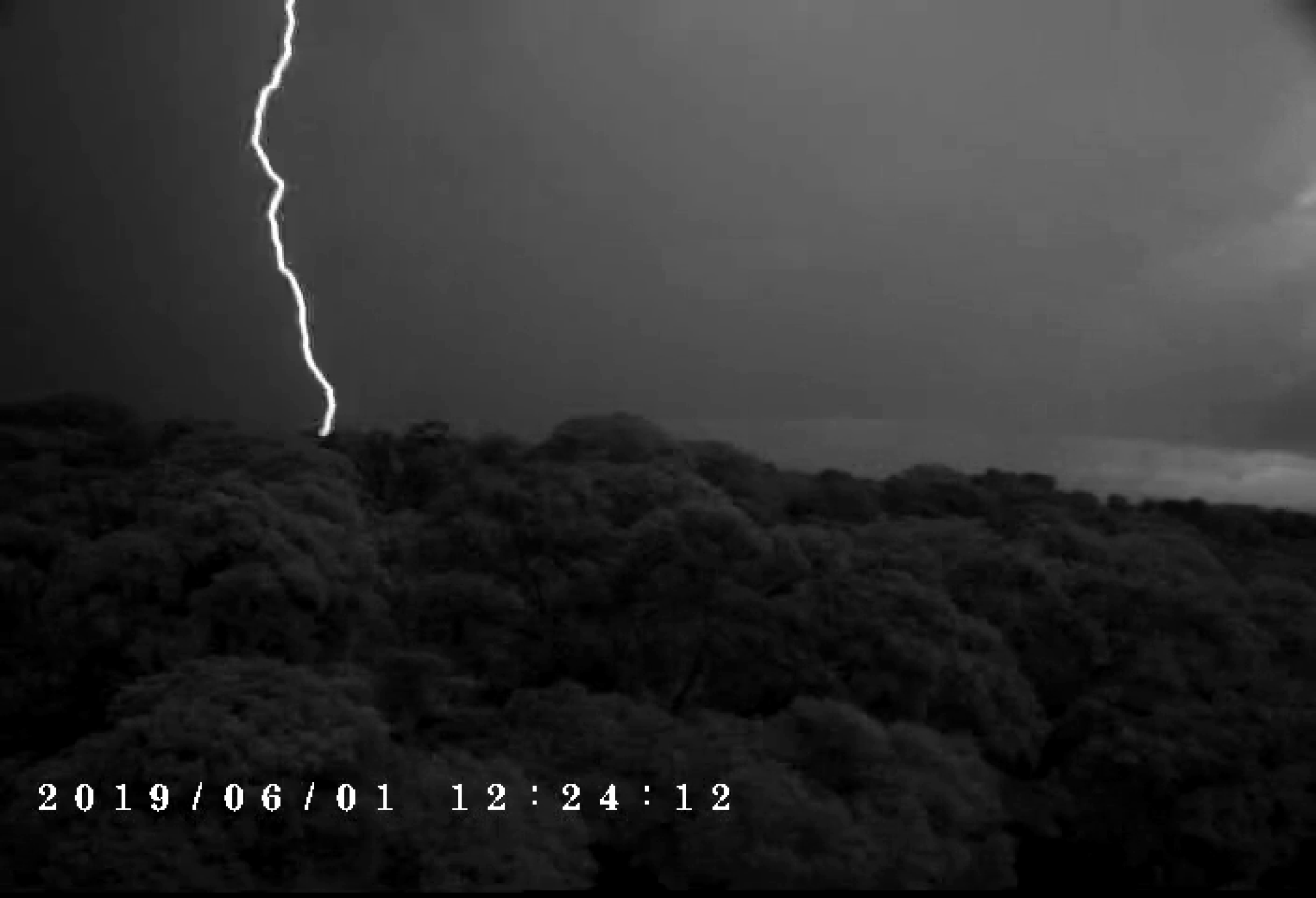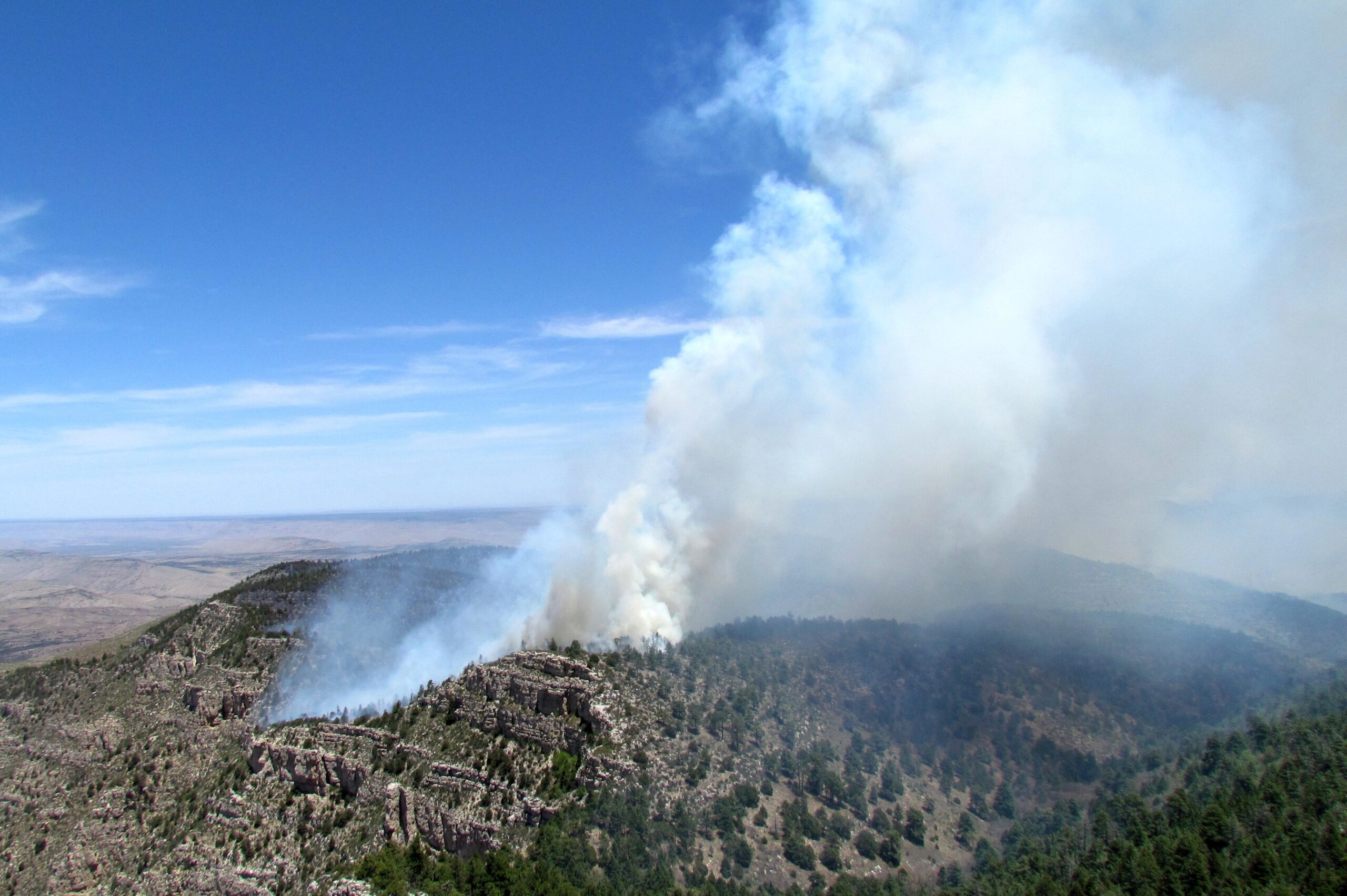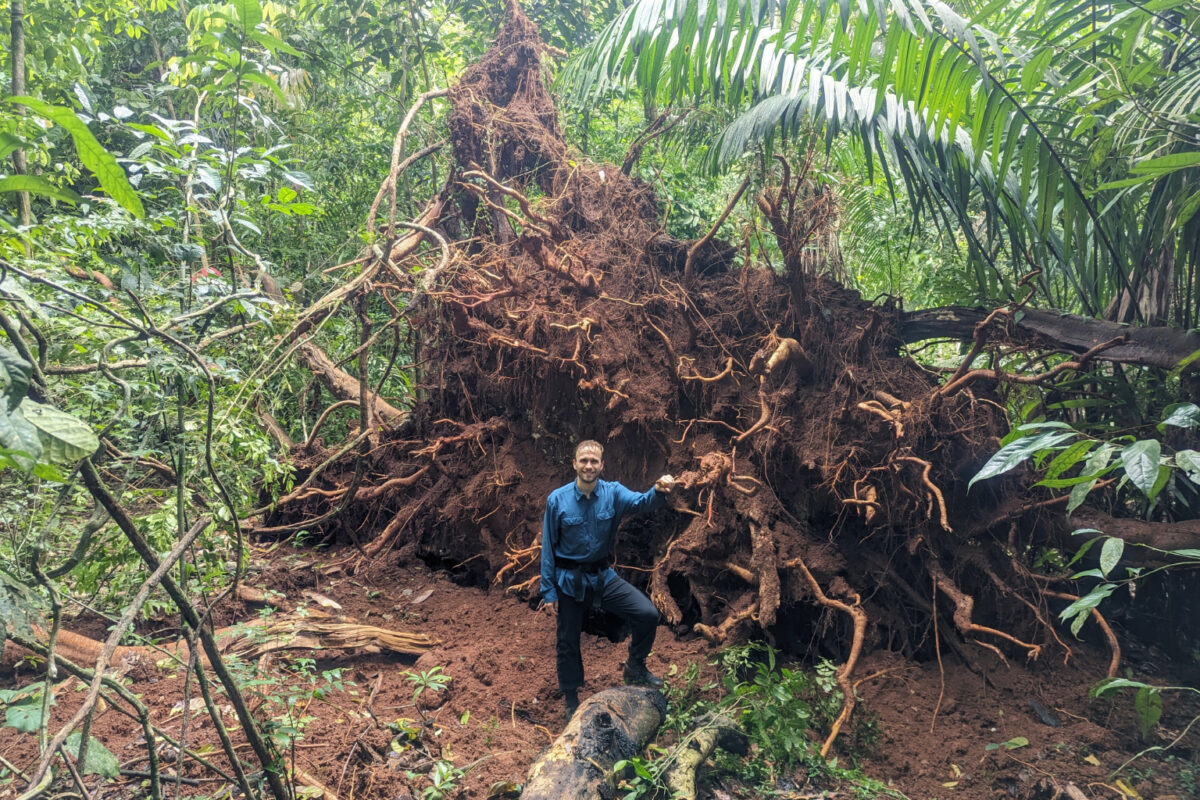- As climate change escalates, intense storms are becoming more common in the tropics and elsewhere, resulting in a variety of forest impacts. Those effects are generating concern among researchers over potentially diminished carbon storage and altered forest composition.
- Increasingly common short-lived convective tropical thunderstorms are a key driver of tree mortality, according to one recent study. Researchers estimate that a combination of high winds and lightning is a major, and often unrecognized, driver of tree death.
- Research suggests convective storms are increasing in the tropics; this could mean more tree death in some regions, such as Latin America. Conversely, there are conflicting data as to whether lightning may decrease or increase in the tropics under climate change, leading to uncertainty about future impacts.
- Beyond the tropics, changing lightning patterns in temperate and boreal forests are linked to increased, often large-scale wildfires that can release vast amounts of carbon dioxide and health-harming particulate matter into the atmosphere.
A climate change-induced surge in brief but intense thunderstorms poses a growing but underrecognized threat to trees in tropical forests, a finding that could have major implications for carbon storage and tropical biodiversity under future global warming scenarios.
That’s according to a recently published paper, which determines that short-lived but powerful convective storms — combining high winds with lightning — have become a major driver of tree mortality in Panama and elsewhere in the tropics.
Researchers estimate storm activity may already cause 30 to 60% of tree mortality in tropical forests globally. Concerningly, that percentage is likely to rise, with data showing tropical storm activity increasing 5-25% every decade, according to study lead author Evan Gora, a forest ecologist at the Cary Institute of Ecosystem Studies.
“If storms are [already] this major driver of mortality as a baseline, and storm activity is [also] increasing, then that would suggest that storms are killing a lot more trees,” Gora says.
But, as the paper notes, there are still limited data from around the tropics with most work on storm impacts concentrated in Panama, Brazil and Borneo. Yet for Gora, his team’s findings coincide with observations that tree mortality has been increasing over the past several decades in the Amazon and Australia, suggesting storms may be playing a role.

“There’s a possibility the increase in storm activity will actually decrease carbon storage and really damage the ability of these forests to regulate our climate, which is super important,” he adds, though the current study did not investigate these possibilities.
The findings are not entirely surprising considering the growing body of knowledge regarding lightning impacts in recent years, says Sander Veraverbeke, an associate professor of climate and ecosystems change at Vrije University Amsterdam, who was not involved in the current study,
“What is being added here in the framework is the mortality from windthrow, in addition to lightning,” he says, windthrow being the uprooting or breaking of trees due to wind. “The paper makes a strong case for the importance of small-scale convective storms, in addition to more widespread temperature and drought drivers, as key mechanisms of tropical forest disturbance.”
“I am not surprised that those small convective storms contribute to explaining tropical tree mortality, but how influential they are did surprise me,” says David Bauman, a research scientist at the French National Research Institute for Sustainable Development who was not involved in the paper. “This study strongly calls for increased efforts and adapted field protocols to improve our monitoring and understanding of this major driver of tropical forest dynamics.”
Conflicting data on lightning in tropical forests
Gora and colleagues have studied lightning as a cause of tree mortality in tropical forests for several years as part of their Gigante project, work that identifies lightning strikes as a major cause of tree death, particularly among large trees in tropical forests. Large trees are important because they generally store more carbon than smaller ones.
It’s estimated that 832 million trees are damaged by lightning each year in the tropics, with nearly 200 million dying as a result. Gora and his team found that about half the large tree mortality at their study site in Panama is caused by lightning.
Storms are clearly changing in the tropics as global warming intensifies, but there is conflicting evidence as to exactly how they’re changing and where: Some data suggest lightning may become less frequent in the coming decades, whereas other data suggest the opposite. But conversely, the number and frequency of intense storms appears to be increasing.
That’s concerning, Gora, says as this stormier tropical future could drive up tree mortality, potentially reducing carbon storage and change forest composition.
But separate research published by Gora’s team shows that not all trees are harmed or even killed by lightning. Their 2024 paper found that Dipteryx oleifera, a Latin American hardwood, actually benefits from lightning strikes, often surviving while nearby competitors die.
This finding suggests that tropical forests, while they may alter in composition, will have some ability to adapt and shift with climatic changes. Though this is far from certain.
“[W]e don’t know enough about these processes,” Gora says. Changing composition “could have cascading effects on birds, mammals, insects, fungi and bacteria,” he notes. And impacts could vary location to location. Most of his research to date comes “from one forest in Panama, [so] we still need to do a lot more work with a lot more species and in more places.”

In some tropical forests, climbing tropical plants known as lianas are increasing in abundance, and that can aid in lightning damage. Exactly why lianas are spreading so rapidly isn’t known, but there are several theories; more atmospheric CO2 could be driving their explosive growth, as could increases in forest disturbance, which creates openings where these sun-loving vine-like woody plants spread.
Trees carrying a heavy load of lianas can be bad news when lightning strikes. “When you have really high liana abundances, they basically act as jumper cables linking lots of different trees together,” Gora says, resulting in as much as a 50% increase in the number of trees killed in a lightning strike at one site. His team’s research shows that smaller trees tend to be harder hit.
This could create a positive feedback loop, with expanding populations of lianas causing more trees to die due to lightning strikes, creating greater space for more liana growth, which in turn enhances lightning harm in future storms, Gora says.
But again, what is true in Panama may not necessarily be true across the tropics. Bianca Zoletto, a Ph.D. candidate at Wageningen University & Research in the Netherlands, who studies tree mortality in Africa, says that while lightning is an important driver of mortality in general, it seems to kill fewer trees per strike in Central Africa compared with South or Central American forests.
“But there is a huge variation,” she cautions. “It could be that in some forests the impacts are way higher, and it could be way lower in others.” Clearly more research is needed to suss out the regional details, amid changing patterns in both lightning and storms across the tropics.
Striking up a fire
Beyond the tropics, climate change’s influence on lightning is causing concerns for experts as a driver of wildfires.
Climate change is now bringing more lightning to northern latitudes, particularly in boreal forests. In 2017, Veraverbeke co-wrote a paper that predicted a sharp increase — of 50% or more — in the number of lightning-driven fires in boreal forests in the northern hemisphere by 2050. In recent years, vast swaths of forest areas have burned in Canada Russia and other boreal forests. 2023 saw more than 16.5 million hectares of forest burned in Canada, with 90% of fires there attributed to lightning strikes.
“We were probably a little bit conservative [in our paper], because it’s already happening now,” Veraverbeke says.
These increased strikes are responsible for about 77% of burned areas in extratropical forest regions, according to research published in 2023. That study, also involving Veraverbeke, found that lightning frequency increases by 11-31% per degree of global warming in such forests.
That sharp rise is causing great concern among scientists that an upsurge in strikes could trigger rapid emission releases.
“The burned area per lightning flash will increase in the future due to … global warming,” says Yang Chen, an atmospheric scientist at the University of California, Irvine. His work highlights the perils of increasing lightning strikes in the Arctic, which can set permafrost alight; between 2010 and 2020, the number of reported lightning strikes in the Arctic increased eight times.
When these strikes trigger widespread fires, they release huge amounts of greenhouse gas emissions, while also causing the “shrubification” of some landscapes, Chen says. Fires can alter tundra vegetation, favoring plant species that burn easily — a positive feedback loop that could lead to further fuel for lightning-driven blazes.

Back in the tropics, very few rainforest fires are currently caused by lightning; it’s simply too wet there for an ignition to occur. But that could be changing too, as indicated by Veraverbeke’s ongoing research.
2024 saw record-breaking fires in the Amazon and across South America. But lightning rarely set them: In a typical year, roughly less than half a percent of all Amazon fires could be lightning-ignited, Veraverbeke says, noting that the vast majority are ignited by people. But utilizing initial unpublished data from an ongoing study, his team has found that the number of lightning-ignited fires may have risen to around 2% in 2024. That amounts to roughly 180,000 hectares (445,000 acres) of burned forest set afire by lightning.
“There were likely more lightning-ignited fires in the Amazon in 2024, but it’s still very rare,” he says. But, “If things get drier there, I’m not saying it’s going to cause the majority of fires, but it could cause more than now.”
The ongoing shifts seen in global lightning frequency and storm patterns are worrying for multiple reasons, researchers say, including increased tree mortality, altered forest composition and dynamics and the risk of large-scale carbon-emitting fires.
“Basically, we should try to reduce the rate of global warming,” Chen says. “I think that’s the only solution we currently have.”
Experts underline that lightning per se is not a bad thing, it being a naturally occurring process for eons, which, under past conditions, helped shape resilient forest ecosystems.
“What’s concerning is, when we manipulate our climate and we cause something like lightning frequency to change very quickly. The organisms in these forests just might not be capable of handling those rapid shifts,” Gora says.
Banner image: Research by Evan Gora and his team found that thunderstorms are a key driver of tree mortality in the tropics due to high winds and lightning. Image courtesy of Steve Yanoviak/University of Louisville.
Citations:
Gora, E. M., McGregor, I. R., Muller Landau,H.C., Burchfield,J.C., Cushman,K.C., Rubio,V.E., Esquivel Muelbert,A. (2025). Storms are an important driver of change in tropical forests. Ecology Letters, 28(7). doi:10.1111/ele.70157
Gora, E. M., Burchfield, J. C., Muller‐Landau, H. C., Bitzer, P. M., & Yanoviak, S. P. (2020). Pantropical geography of lightning‐caused disturbance and its implications for tropical forests. Global Change Biology, 26(9), 5017-5026. doi:10.1111/gcb.15227
Qie, K., Tian, W., Wang, W., Wu, X., Yuan, T., Tian, H., … Wang, T. (2020). Regional trends of lightning activity in the tropics and subtropics. Atmospheric Research, 242, 104960. doi:10.1016/j.atmosres.2020.104960
Finney, D. L., Doherty, R. M., Wild, O., Stevenson, D. S., MacKenzie, I. A., & Blyth, A. M. (2018). A projected decrease in lightning under climate change. Nature Climate Change, 8(3), 210-213. doi:10.1038/s41558-018-0072-6
Gora, E. M., Muller‐Landau, H. C., Cushman, K. C., Richards, J. H., Bitzer, P. M., Burchfield, J. C., … Yanoviak, S. P. (2025). How some tropical trees benefit from being struck by lightning: Evidence for Dipteryx oleifera and other large‐statured trees. New Phytologist, 246(4), 1554-1566. doi:10.1111/nph.70062
Rueda-Trujillo, M. A., Veldhuis, M. P., Van Bodegom, P. M., De Deurwaerder, H. P., & Visser, M. (2024). Global increase of lianas in tropical forests. Global Change Biology, 30(8). doi:10.1111/gcb.17485
Gora, E. M., Schnitzer, S. A., Bitzer, P. M., Burchfield, J. C., Gutierrez, C., & Yanoviak, S. P. (2023). Lianas increase lightningcaused disturbance severity in a tropical forest. New Phytologist, 238(5), 1865-1875. doi:10.1111/nph.18856
Veraverbeke, S., Rogers, B. M., Goulden, M. L., Jandt, R. R., Miller, C. E., Wiggins, E. B., & Randerson, J. T. (2017). Lightning as a major driver of recent large fire years in North American boreal forests. Nature Climate Change, 7(7), 529-534. doi:10.1038/nclimate3329
Chen, Y., Romps, D. M., Seeley, J. T., Veraverbeke, S., Riley, W. J., Mekonnen, Z. A., & Randerson, J. T. (2021). Future increases in Arctic lightning and fire risk for permafrost carbon. Nature Climate Change, 11(5), 404-410. doi:10.1038/s41558-021-01011-y
FEEDBACK: Use this form to send a message to the author of this post. If you want to post a public comment, you can do that at the bottom of the page.
